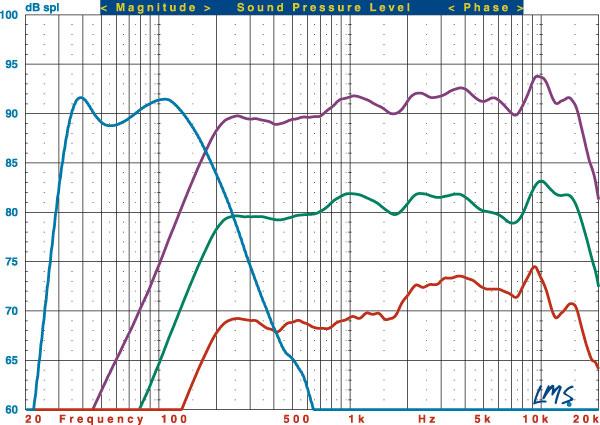The answer says "You'll notice that there's a slight gap in between the curves where the sonic output of the system in total appears to be about 3 to 4 decibels down from the peak levels of the subwoofer and satellite on either side."
But, I don't see the curve for the total output, only curves for the individual speakers. Wouldn't you need to generate a composite curve representing the total output in the overlap region?






































































